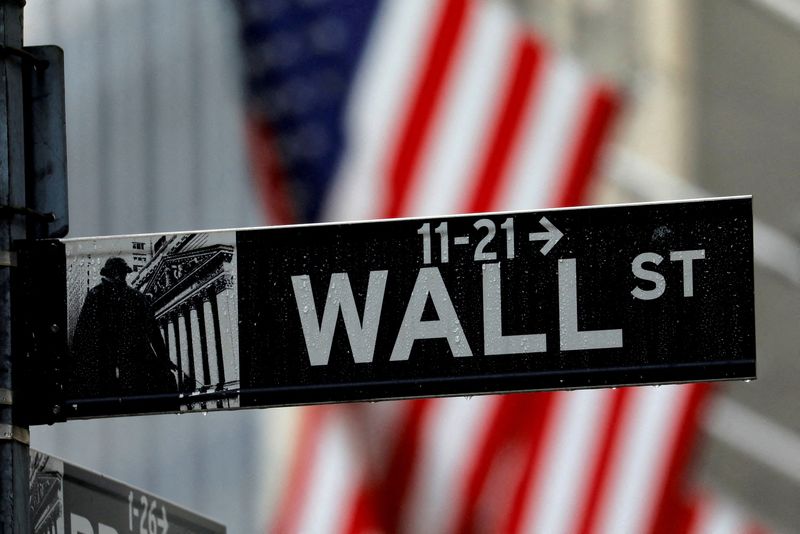
The first quarter earnings season is set to kick into overdrive, with a number of reports due from the all-important U.S. banking sector due later in the session.
JPMorgan Chase (NYSE:JPM), Citigroup (NYSE:C) and Wells Fargo (NYSE:WFC) all report results before the opening bell, and investors will be looking closely at these numbers as the health of the banking sector can often be used as a measure of the strength of the economy as a whole.
The focus for all of the major banks will be how the shifting view on interest rates will impact funding costs and holdings of commercial real estate loans.
The uncertainty over the interest rate outlook is likely to hang over the first-quarter earnings season as a whole.
Analysts expect S&P 500 companies in aggregate to report earnings increased 5% in the first quarter from a year earlier, according to LSEG data, a sharp drop from the 10.1% growth seen in the fourth quarter of 2023.
U.S. stock futures steadied Friday after the week’s previous volatile sessions, ahead of the release of corporate earnings from a number of major banks, widely seen as the official start of the quarterly earnings season.
By 04:45 ET (08:45 GMT), the Dow futures contract was 45 points, or 0.1%, higher, while S&P 500 futures dropped 3 points, or 0.1%, and Nasdaq 100 futures fell by 25 points, or 0.1%.
Thursday saw a sharp rebound for the S&P 500 and the Nasdaq Composite, as tech shares led a comeback from Wednesday’s inflation-fueled sell-off.
The S&P 500 gained 0.7% and the Nasdaq soared 1.7%, to close at a new record, while the blue-chip DJIA closed just lower.
Earnings from a number of major banks [see above] will dominate sentiment this session, although there are also a number of Fed officials, including Bostic and Daly, set to speak, and could offer more clarity to the current interest rate picture.
The hotter-than-expected consumer price index, released earlier in the week, has contributed to U.S. large cap stocks suffering their largest weekly outflow since December 2022.
U.S. large caps saw $15.8 billion of outflows in the week to Wednesday, while stocks in general saw outflows of $19.6 billion, Bank of America said in its weekly flows round up using EPFR data.
The week to Wednesday covered last Thursday’s jitters on Wall Street on hawkish remarks from Federal Reserve officials and oil nudging above $90 a barrel, and this Wednesday’s stock market tumble after stronger-than-expected U.S. inflation data.
The blue chip Dow Jones Industrial Average is currently on track to close the week over 1% lower.
The U.K. economy looks set to shortly exit its recession, after output grew for a second month in a row in February, and January’s reading was revised higher.
Gross domestic product expanded by 0.1% in monthly terms in February, according to the Office for National Statistics earlier Friday, while January’s reading was revised to show growth of 0.3%, up from 0.2% earlier.
Britain fell into recession in the second half of last year, but the first quarter of 2024 is likely to show some growth, as the three-month average growth rate rose to 0.2% in February from zero in January – the highest such reading since August.
This data could reinforce the Bank of England’s cautious tone around the prospect for interest rate cuts, however any growth in the first half of the year is still likely to be extremely tepid.
With dovish noises continuing to emerge from the European Central Bank after it held rates unchanged on Thursday, growth in the U.K. remaining fragile, and inflation in the U.S. still elevated, it looks like the Federal Reserve is leading the race over which central bank is the last to cut.
Currently, traders expect an ECB cut in June, a BoE easing in August, and a Fed reduction in September.
Crude prices rose Friday as geopolitical risks, particularly in the oil-rich Middle East, remained elevated, but are set for weekly losses on concerns over U.S. monetary policy.
By 04:45 ET, the U.S. crude futures traded 1.1% higher at $85.94 a barrel, while the Brent contract climbed 0.9% to $90.52 per barrel.
U.S. officials have predicted an attack by Iran against Israel shortly, in retaliation for a suspected Israeli air strike against a top Iranian military commander in Damascus earlier this week.
There remains the risk that Iran, the third-largest producer in the Organization of the Petroleum Exporting Countries, is dragged into the conflict between Hamas and Israel in Gaza, potentially hitting crude supplies from the region.
However, both contracts are still expected to end the week around 1% lower as sticky U.S. inflation pointed to the Federal Reserve keeping interest rates at high levels for longer than previously expected, potentially hitting activity in the world’s largest economy.
The International Energy Agency cut its forecast for oil demand growth this year, by around 100,000 barrels per day to 1.2 million barrels per day, in its latest monthly report, released earlier Friday.
The global energy watchdog said that it expected the pace of expansion to decelerate even further to 1.1 million barrels per day next year “as the post-Covid 19 rebound has run its course.”
To read the full article, Click Here
